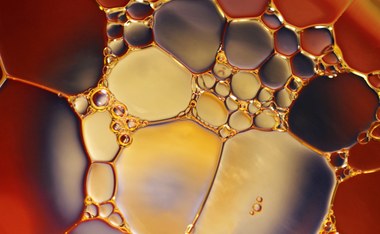Advanced modelling to develop biobased surfactants from cellulose waste
(12-08-2019) UGent and Eastman Chemical Company from GREEN-CHEM and several other partners collaborated to produce biobased amines as building blocks for surfactants.
Researchers from the GREEN-CHEM network at Ghent University and Eastman Chemical Company, together with the University of Leuven, Vito, Cargill and Ecover have investigated a way to produce biobased amines as building blocks for surfactants. In this project funded by Catalisti, glucose from cellulose waste was investigated as a model component to produce amines. An industrial scale reactor simulation model was also developed to identify the optimal reaction conditions to maximize product yields.
Short amines, are important compounds in today's bulk and fine chemicals industry, for example as building blocks for the production of cationic surfactants. These compounds are widely used as detergents, wetting - & foaming agents, emulsifiers and dispersants.
Unfortunately, current industrial production of these chemicals relies on fossil resources and requires rigorous safety measures when handling explosive or toxic intermediates. That is why industrial players in chemistry are continuously investigating and evaluating alternatives for new as well as already existing processes and product streams.
Biomass is a widely available alternative feedstock for the production of chemicals. Therefore, a promising route to produce ‘green’ amines could be the use of waste biomass, i.e. by aminolysis of cellulose pulp from the paper industry.
Working together
Therefore, the group of prof. Joris Thybaut at Ghent University (UGent) teamed up with researchers from the University of Leuven and VITO and several industrial players, i.e. Eastman Chemical Company, Cargill and Ecover, to explore the aminolysis of sugars to produce biobased amines.
The activities were bundled in the Carboleum project and received over 1 million € in funding from Catalisti, the chemistry support cluster from the Flemish Government.
The UGent professor was asked because of his expertise in the advanced modelling for process optimisation, design and accelerated scale-up of chemical reactions. Glucose was investigated as a model component to produce two components that are used to make surfactants, i.e. DMAE and TMEDA, through reductive aminolysis. “We were able to demonstrate experimentally as well as by modelling that both compounds can be obtained with high yields and selectivities”, says prof. Thybaut. “This depended on the operating conditions and the reactor configuration that was used.”
Unravelling the reaction kinetics
As a first aspect the detailed chemistry of glucose reductive aminolysis was quantitatively assessed. “Fed-batch experiments were the ideal starting point as this allowed us to avoid glucose degradation as much as possible”, continues prof. Thybaut. “This detailed modelling has shown us how many individual phenomena in the chemical reaction, such as homogeneous catalysis, heterogeneous acid and heterogeneous metal catalysis, simultaneously occur during the reductive aminolysis reaction.”
As a result a kinetic model was developed and used to maximize the lab-scale selectivities of DMAE to 15% and TMEDA to 60%.
Industrial scale-up
Prof. Thybaut: “We also simulated this at a commercially relevant scale amounting to 1 to 2 ton/day. For this we used two different reactor configurations: a jet loop reactor, which ensures good mixing, and a trickle bed reactor, which has the most simple construction.”
“In the jet loop reactor we found that the production of TMEDA is favored as it is formed after the highest number of homogeneous reaction steps. On the other hand, in the trickle bed reactor the efficiency of gas-liquid mass transfer determined whether DMAE or TMEDA was mainly produced.”
“We are not there yet to bring biobased surfactants on the market. However, together with the different partners in the Carboleum project, we were able to model and show that reductive aminolysis of sugar is a promising strategy for the sustainable synthesis of short biobased amines”, concludes prof. Thybaut.
